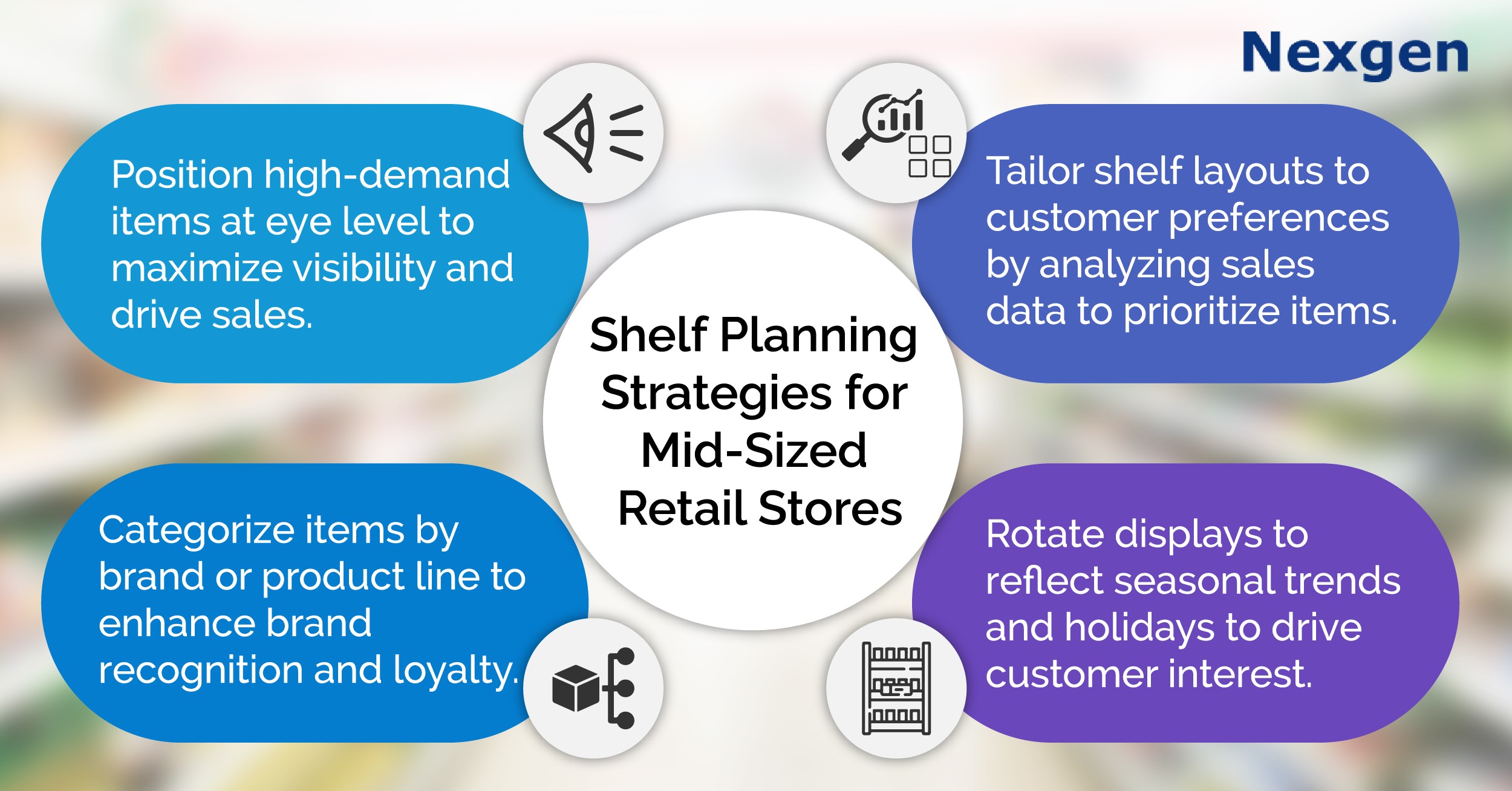Today, most mid-sized stores face unique challenges when it comes to maximizing space and driving sales. However, with the right shelf planning strategies using planograms, these stores can effectively organize their merchandise to enhance visibility, promote cross-selling, and ultimately boost revenue. In this blog, we will explore three key shelf planning strategies tailored specifically for mid-sized retail establishments.

1. Data-driven product placement.
Mid-sized retail stores can benefit significantly from data-driven product placement strategies. By analyzing sales data, customer preferences, and purchasing patterns, retailers can identify which products are top sellers and which ones may need a boost in visibility. Utilizing this information, they can strategically place high-demand items at eye level or in prominent areas of the store to increase their visibility and accessibility to customers. Moreover, data-driven insights can help retailers identify complementary products that can be grouped together to encourage cross-selling using shelf planning software . For example, pairing a popular pasta sauce with complementary pasta shapes or offering a discount on a bundled set of skincare products can entice customers to make additional purchases.
Implementing a dynamic shelving strategy that adapts to changing trends and seasonal demands is also key. By regularly analyzing sales data and adjusting product placement accordingly, mid-sized retail stores can ensure that their shelves are always optimized for maximum sales potential.
2. Visual merchandising techniques.
Visual merchandising plays a crucial role in shelf planning for mid-sized retail stores. Creating visually appealing displays that capture the attention of customers can significantly impact sales and the overall ambiance of the store. Utilizing techniques such as color blocking, vertical merchandising, and focal points with the help of planograms can help draw customer’s eyes to specific products and encourage browsing.
Color blocking involves grouping products of similar colors together to create visually striking displays that stand out on the shelves. This technique can help create a cohesive and aesthetically pleasing look throughout the store while highlighting key products. Vertical merchandising utilizes varying heights and levels to create visual interest and break up the monotony of horizontal displays. By incorporating shelves of different heights and utilizing display fixtures such as risers and easels, retailers can create dynamic displays that showcase products from multiple angles. Focal points are strategically placed areas within the store that draw customers' attention and serve as focal points for merchandising displays. These areas can feature seasonal promotions, new arrivals, or best-selling products, enticing customers to explore further and potentially make a purchase.
3. Flexibility and adaptability.
In the ever-changing retail landscape, flexibility and adaptability are essential for mid-sized retail stores to remain competitive. Implementing shelf planning strategies that allow for easy reconfiguration and adjustment is crucial for accommodating shifting consumer preferences, seasonal fluctuations, and new product introductions.
Modular shelving systems and adjustable fixtures enable retailers to quickly reconfigure their store layouts to accommodate changes in product assortments or promotional displays. By investing in versatile shelving solutions, mid-sized retail stores can optimize their space efficiently and make the most of their available square footage. Additionally, regularly monitoring shelf space and product assortment can help retailers identify underperforming products or categories that may need to be replaced or repositioned. By staying agile and responsive to market trends, retail stores can ensure that their shelves are always stocked with products that resonate with their target audience and drive sales.
Overview of Nexgen POG
Nexgen POG is a robust and user-friendly cloud-based visual merchandising tool. It is designed for quick and efficient planogramming with minimal effort. Planogram in retail can be designed by easily dragging and dropping the products. The multi-device compatibility feature of POG allows you to obtain, share and edit planogram on any device, including your phone. It helps in designing store-specific planograms for increased product visibility and sales.
Get Your Free Trial Now!